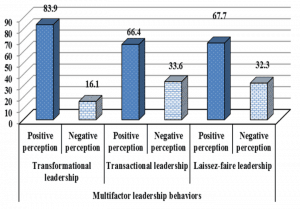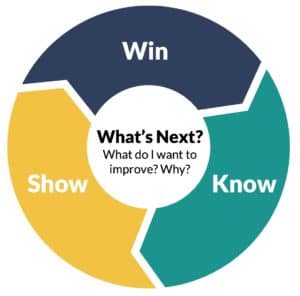
Business Outcomes of Approachability: New Study
Business Outcomes of Approachability: New Study
My former intern, Josh Royes Ph.D. and I wrote a research paper on the business outcomes (turnover, organizational citizenship behavior, and organizational satisfaction) seen in organizations with approachable leaders, one of many studies that support the importance of leader approachability. The study examined whether leader approachability impacts these organizational outcomes above and beyond factors like pay satisfaction and work conditions satisfaction.
We conducted the research using 7,728 participants spread across 48 locations in 3 different companies. Short answer: leader approachability has a big positive impact on these critical workplace measures. A couple of my favorite findings from the research:
A more practical way to understand the impact Approachability has on these important workplace outcomes is using a bivariate effect calculation. For example, the correlation of -.50 between Approachability and turnover intention means that this study suggests that 75% of leaders will be either high Approachability-low turnover or low Approachability-high turnover. The .55 correlation between Approachability and OCB means that 77.5% of leaders will be either high Approachability-high OCB or low Approachability-low OCB. The correlation of .56 between Approachability and organization satisfaction means that 78% of leaders will be either high Approachability-high organization satisfaction or low Approachability-low organization satisfaction. Thinking about correlations this way highlights the practical significance of Approachability.
Another important finding:
The results for hypothesis 3 are very important. They indicate that Approachability predicts turnover intention, OCB, and organization satisfaction beyond workplace conditions satisfaction and pay satisfaction. Additionally, Approachability was as important in predicting these outcomes as improving satisfaction with workplace conditions or pay. While providing solid pay and working conditions is clearly effective, it is not without downsides. Improving work conditions and increasing pay often require significant investments that can be dismissed by employees over time (i.e., “what have you done for me lately?”) It is uncertain if the short-term improvements would outweigh the cost. Additionally, satisfaction with pay and workplace conditions may not rise linearly with changes to pay or workplace conditions, further reducing potential return on these investments.
On the other hand, training leaders to improve their approachability requires a smaller investment that continues to reap benefits with each daily interaction between leaders and their teams. It is also possible that increasing leader approachability also increases employees’ satisfaction with their pay or workplace conditions, since the three constructs are moderately related. Additionally, training a leader can help the leader fulfill psychological needs of their employees, whereas pay satisfaction and workplace satisfaction are merely contextual factors. This could be a distinction of more internalized motivators as compared with external motivators (Gagne & Deci, 2005).
Therefore, targeting leaders with Approachable Leadership training is less expensive than improving the work environment or increasing pay and yields similar if not better results. Our results suggest an organization struggling with high turnover, low OCB, or low organization satisfaction (or all three), should strongly consider targeting leader approachability as a viable and effective method to remedy these issues.
I encourage you to check out the entire research paper. You can find it at the link below.
Leader Approachability: Reduced Turnover and Other Business Outcomes (Approachable Leadership 2021)


















